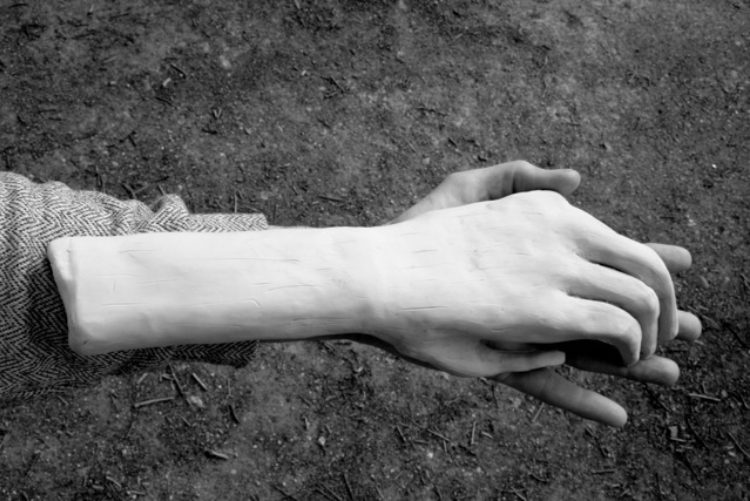
Research
Wondering whether it is possible to do a PhD in Visual Arts? Of course! Research plays a major role here.
In our PhD projects and research platforms, we do research in, for and with the arts. Every single day. At Sint Lucas Antwerpen, we have various research platforms and many ongoing and defended PhD projects. But there’s always room for more…
Research in the Arts
Sint Lucas Antwerpen has a heart for artistic research.
Lecturers and PhD students are involved in numerous projects, master classes, workshops, conferences, seminars and exhibitions based on research activities.
Artistic research in Sint Lucas Antwerpen is always conducted within an interdisciplinary and artistically relevant context.
There are one year, two year and PhD research projects. There is also our research publication called GROUNDS (previously TYPP) and – unique in Flanders – an Advanced Master: Master of Research in Art & Design.

Contact
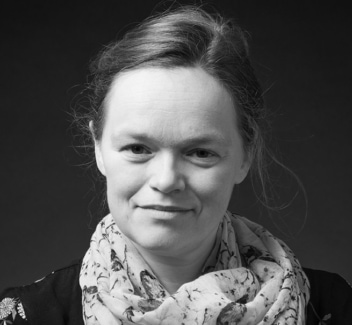
Petra Van Brabandt
Head of Research & Social Services
Lecturer for Academic Bachelor of Visual Arts: Theory
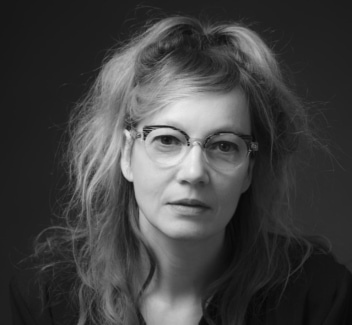
Ruth Loos
Policy Officer Research and social outreach
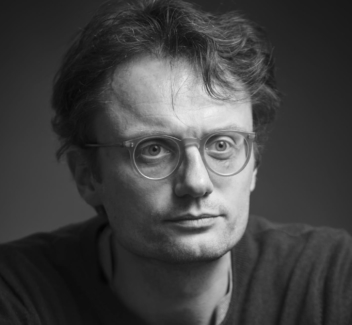
Tom Viaene
Lecturer theory
Policy officer Research
Our research projects
At Sint Lucas Antwerpen, lecturers, artists, designers, and researchers engage in one- or two-year research projects, expanding their (artistic) knowledge within relevant contemporary and interdisciplinary contexts. These projects explore diverse themes, ranging from material research and artistic methodologies to critical reflections on society, history, and technology.
Both current and past research projects contribute to a dynamic research environment, fostering dialogue within and beyond the academy. The artistic knowledge developed is shared with peers, colleagues, and the wider public in the fields of art and design through workshops, publications, exhibitions, seminars, and masterclasses.
We welcome inquiries about research collaborations and social projects.
Current research projects

The Talisman of the Fluid Word
(2024-2025)
Researcher: Joud Toamah
I want to explore script as a further unfoldment of my previous research ‘Courtyard of Memory’ on the Fear Soothing Bowls. I encountered the role script has in the soothing and protective ritual of the Fear Soothing Bowls. Engraved on the surface of the copper by the skilled and careful hands of artisans, these Arabic scripts in different styles of Kufic geometric lines, organic Thuluth or in the handwriting of the artisan read Quranic verses, prayers and the Holy names of Allah. I’m interested in exploring the spiritual, talismanic, protective and ritualistic qualities of script in its role in the fear soothing bowls, accompanied with ornaments engraved, printed, drawn, sculpted or spoken. What are the rituals and processes for drinking and embodying text of Divine connection? What form do they take and how do they look and taste for others? My goal is developing a lettering practice, which as a result will be an added element in different applications and visualisations of sharing the research as part of websites, publications and installations that relate to this research.

Exploring gender, diaries and binaries through visual essays
(2024-2025)
Researcher: Sam Vanbelle
In 2019, I started a series of mini sketchbooks: a safe place to draw around fertility, trans pregnancy, chestfeeding, medical transition, parenthood. During this research project I want to find ways to translate this archive of drawings into a collection of short visual essays. I’ll take the constraints of the initial sketchbooks as a formative guide. I’ll work with the spontaneity and looseness of the drawings and with the sequentiality of the booklets. I want to figure out how to use the day-to-day of the sketches as an approachable access to the trans theme. I’ll experiment with short pieces of narrative as this will give me the freedom to try different narrative styles and explore narrativity in general. Conversations with other trans and queer authors and individuals will help support the narrative and make the story broader than only my own. I aim for a socially relevant, loose collection of readable visual essays. A small piece of quiet, visual activism in a world where the space for gender varition is often narrow.

Pockets of Control / Protection Spells
(2024-2025)
Researcher: Sander Van de Vijver
The research project aims to explore ‘world building’ – an established discipline in applied narrative contexts like animation, concept art and video game design – as a conceptual grounds for counter-narrative, specifically in the context of those dealing with possible futures and their ramifications.
Through the imagining of small-scale spaces – their geometrics, myriad objects and the configurations they find themselves in – as prime subject matter, the project aims to provide a sideways view on themes of safety and control, the loss of it, ritual, protection.
‘Sideways’, as in wanting to invite ambiguity, non-linearity, speculation. A ‘view’ as in a look into, a being surrounded by, an interacting with virtual spaces, objects. The chosen modality is that of the videogame, one of the emergent contexts of applied illustration in a digital context. Or more specifically, experimenting with several of its components – immersion, interaction, a moving viewport, interactive objects – and a lot of its technical and visual language – meshes, textures, shaders, animations.
I aim to produce several small-scale digital prototypes and iterate on them. Technically I would like to combine 2d digital illustration with 3d design methodologies, and the intersection of drawing and programming. I specifically want to take some time to explore the uses of parametric design and procedural generation as parts of this toolset.
Furthermore I want to explicitly position this project within the applied field of illustrative design and its tangential field of game design, more so than in an autonomous or hybrid context, as I feel there is the most ‘work to be done’ from where I am standing: the material culture of survivalism throughout the ages has been moodboard fodder for a long time. The ‘scavenger’ as gritty protagonist fetishised, conflict and its often violent resolution center staged. I hope to steer clear of this and provide a small counterweight, by acting more as a ‘stock taker’ than a ‘dungeon master’ in my approach towards story, and by centering flux and a constant re-arrangement, instead of solution and resolution, and by introducing – hopefully, because not all too deliberately – nuance, ambiguity, fragility.
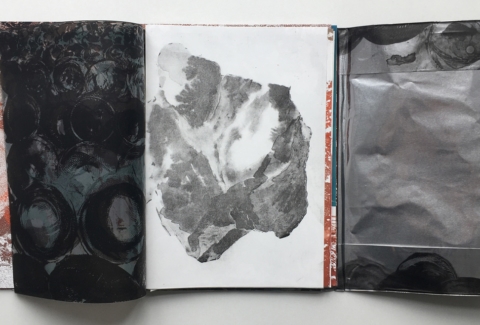
City in Reverse: Reflecting Aluminum
(2021-…)
Researcher: dr. Karen Vermeren
The research project wants to explore whether the representation of a contemporary (geological/urban) landscape can be enhanced using the material aluminum. In addition to concrete and plastic, it is a symbolic material for the current Anthropocene era, a so-called technofossil. Drawing and/or painting takes place with and/or on various aluminum carriers, challenging innovative spatial approaches and interactions. The characteristic properties of the improper material in relation to an (urban) landscape are investigated. By using formal means – such as the grid, folds, a window – the crumbling landscape is given a new framework. Reflective surfaces are added to this research project: the in-situ experience is (re)quested, and new meanings are generated for the concept of time.

Strange Loops: performative explorations with trustworthy AI
(2025-2026)
Researcher: Frederik De Bleser, Lieven Menschaert, Myrthe Bokelmann & Celia Tort Pujol
This research explores the intersection of AI and performance art by developing human-scale, trustworthy AI systems that enable artists to engage in creative interactions with machines. These AI systems are designed to be adapted during working sessions, allowing for rapid iterations and real-time adjustments.
Using these AI systems we aim to develop an open method of performative explorations. Through these explorations we create sensory and conceptual translations that present a dialogue between body and machine. The project will result in a series of performances and open-source tools that showcase the potential of AI in artistic contexts, fostering a collaborative and improvisational relationship between human performers and intelligent machines.

(re:Sol)
(2024-2026)
Researcher: Reem Shilleh & Joachim Ben Yakoub
Situated in the Kitchen, a collective study space dedicated to practices of memorial restitution, (re:Sol) proposes to work collectively on different forms of re-distribution of two radio programs and two self-published magazines produced by the Maghrebi community during the 1970s and ’80s in Brussels. Collaborating and working nearby protagonists and witnesses of that period, it engages in possible forms of sonic and visual re-imagination, and re-distribution of forms of solidarity engrained in the collected traces of Sawt El Muhajir, Radio El Wafa, Le Travailleur Arabe and Tribune Immigrée. Weaving printing and sonic practices, it aspires to contribute to the ongoing conversations in artistic research on collective forms of imagination, memory and solidarity work.
Past research projects

Towards Braver Spaces
(2023-2024)
Researcher: Tunde Adéfioye & Imane Benyecif
This research project investigates the creation and sustainability of “Braver Spaces” in Antwerp. The study explores collective art-based practices that support artistic development and incorporate care as a practice. The project will examine past implementations of Braver Spaces, the methods used since its inception in 2021, and future possibilities. Key research questions include the nature and impact of braver spaces, their limitations, and the lessons these limitations can teach for future iterations. The methodology involves using art-based tools, experimental thinking, co-creative and horizontal working methods. Objectives include reflecting on and experimenting with the Braver Spaces concept, interviewing participants, formulating consistent forms of collectivity, researching the feasibility of creating sustainable physical spaces for collective artistic experimentation, and assessing potential partnerships. Expected outcomes include the development of various reflection methods, a manuscript or collage documenting the research, the beginnings of a collective toolkit, and the creation of an informal network. The project emphasizes the importance of alternative learning perspectives, cooperation, dialogue, and centering marginalized individuals within artistic and societal contexts.

On sand: unpacking preciousness
(2023-2024)
Researcher: Saskia Van der Gucht
This one-year artistic research project questions, through the Capitalocene as an overarching theoretical framework, what the role of packaging could be, in the age of understanding our interdependence with living and non-living beings. In a 2022 UN report on sand and sustainability, sand is reported to become scarce as it is the second most used resource, after water, on earth. It is present in every structure, road, window and screen we use daily. As abundant as it seems, it is predicted to become scarce due to overconsumption by industrial use. In my artistic practice, the metonymy of packaging and preciousness, jewellery boxes being a well-known example, becomes a means to question how the finitude and thus the value of this raw material and the consequences of its extraction are underestimated. Through re-making and repairing industrial sand packaging by hand and crafting new ways of carrying, I’m searching for slow and gentle forms to visualize a sense of care for materials.

Courtyard of Memory
(2023-2024)
Researcher : Joud Toamah
How can generational practices of personal and communal protection and medicine be remembered and practiced in situations of exile and diaspora? How can they be read and practiced?
For this research proposal, I center an ancestral object and practice of protection and soothing, the ‘Fear Soothing Bowl’. My research will approach this subject in four multiple dimensions: first as an object, from the material, to the formal, to the design elements, second as a protective ritual related to Islamic, local and generational philosophies and knowledges, third as a relational communal element, fourth as a practice related to time-space. I’m interested to look at the elements that the craftsmen engrave on the bowls, from text, images and numbers, as a source to understand ‘design’ as part of a healing art, and the role traditional craftsmanship and craftswomanship played in it. I am also interested to study the materials used for these bowls, usually copper, and experiment with different mediums to create and present the research in a shared space.
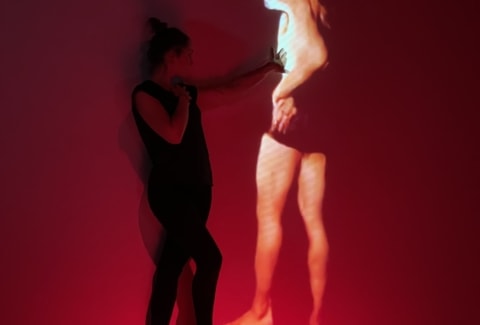
Performative AI – an Unstable Alliance Between Bits and Body
(2021-2024)
Researchers : Frederik De Bleser, Lieven Menschaert, Ine Vanoeveren, Cèlia Tort Pujol, Myrthe Bokelmann.
This research explores how AI understands the materiality of body, space and time. The research project aims to bring AI into the artist’s practice by developing open-source tools and methodologies that make the domain more accessible and transparent. Through carefully self-assembled datasets and an intuitive visual understanding of algorithms, we can avoid the bias inherent in large-scale models and take ownership of our own “small AI.”
https://algorithmicgaze.com/projects/performative-ai/
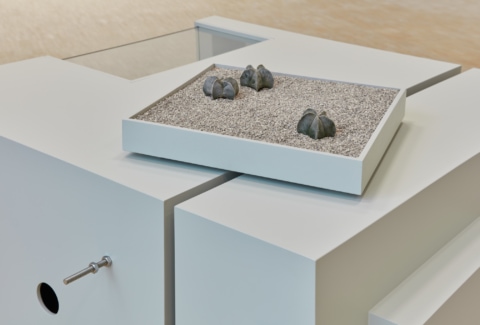
In the zone of the Science Fictional
(2021- 2024)
Researcher : Welsey Meuris
An accumulation of seemingly scientific facts (historical and technological) often conceives an overly one-sided view on future thinking. This research wants to examine how specific narrative techniques can be used to cast an accessible yet critical light on sometimes too plausible scenarios. Speculative design, fictocriticism, design fiction, potential history, science fiction… are some of the techniques that can be used experimentally to reconsider deeply rooted relations to scientific progress. Science fiction can offer the possibility of presenting things differently than they appear, perhaps closer to what they actually are. Furthermore, science fiction can be used to explore the limits of what it means to be human when confronted with the non-human. Which artistic processes and constellations allow us to reconsider common chronologies? How can new and alternative narratives reposition the current configuration of science and technology?
www.wesleymeuris.be
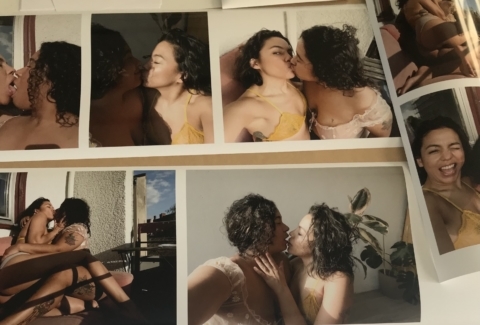
Women versus the void – apocalyptic feelings and healings in custom everything
(2021- 2023)
Researcher : Helen Dowling (Mauli)
Informed by science fiction literature I investigate whether I can use the analogy of the apocalyptic within the mundane to carve out space for and frame expressions of female frustration and sexuality. In practice this space will be within the sphere of custom pornography. I will be working with a professional pornographer from this field. In doing so, my aim is to produce content that derives representations of female sexuality from the particularities of custom porn, in visual, technical, and ethical terms.
www.helendowling.com
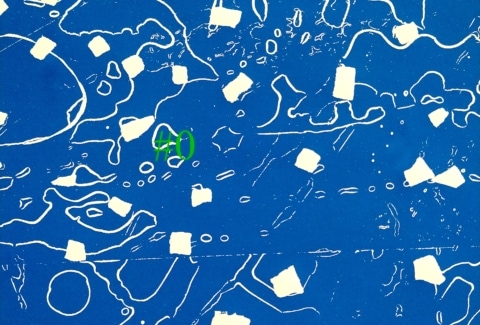
Sharing Tools and Strategies for Transformative Art Collaboration
(2021- 2022)
Researcher : Marnie Slater
This research emerges from challenges I experience though my collaborative practice within the visual arts. Namely, that although there is an increasing interest in collaboration as a transformative practice, artists are under-tooled to work together. I will ask: How are artists who practice together embedding their aims within their collective working methodologies and how can I gather and share these tools and strategies with others?
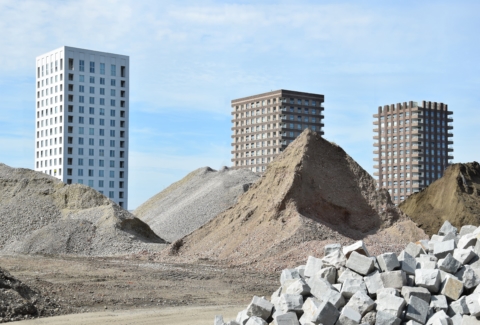
Jewellery Matter Time: Hard Data, Soft Stories
(2021-2022)
Researchers : Saskia Van der Gucht & Irma Földényi
‘Jewellery Matter Time – Hard Data, Soft Stories’ unveils contemporary stories about mined materials and how they contribute to jewellery as a practice. The global movement of materials has a variety of ecological effects, many of which are concealed in the shadows behind shiny objects. If jewellery can tell stories, which stories could they tell about their origin in the age of the Anthropocene?
This geological era in which mankind’s influence on the earth and its atmosphere is visible, overconsumption and overproduction asks from us researchers to redefine preciousness and scarcity. In this research hard data is defined as facts on material movement such as extraction, transport, consumption and recycling. Soft stories are outcomes – meaningful connections between these facts – that will be crafted into objects and installations.
studio-if.nl
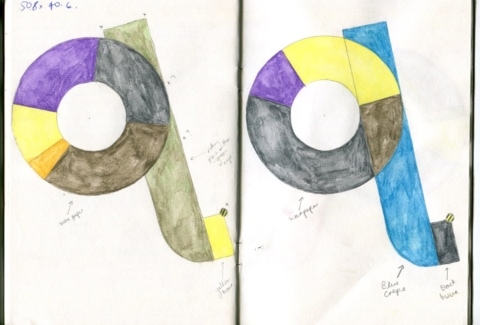
Learning from Queer, Feminist and Decolonial Activism
(2020-2021)
Researcher: Marnie Slater
As a visual artist, I have both a solo art practice, and a series of long-term and short-term collaborations that are committed to self-organizing. My participation in collaborative art practice is motivated by a desire to form a queer, feminist and decolonial position, and an urgent sense that this can only be done from within the relational politics of a collective. In my experience, however, visual arts institutional structures often struggle to provide channels that can accommodate or inform the processes we need for queer, feminist and decolonial collaborative work. Within this research I will analyze the collaborations I am directly involved in and look to specific forms of feminist, queer and decolonial activist organizing to ask: Can activism, a field often considered as adjacent to the discourses of contemporary art making, provide practical process tools for artistic collaborations? This research will examine the ways that we, as queer, feminist and decolonial art collectives, can define our own processes, ethics and ways of relating with each other to denaturalize and confidently resist conventional working methodologies.
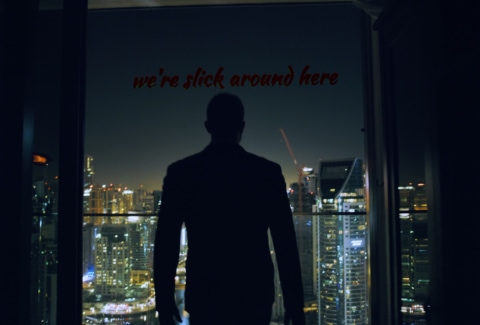
Terms of Intimacy, an abstract
(2020-2021)
Researcher : Helen Dowling (Mauli)
This research taps into one of my overarching interests in digital culture, namely, the impact distribution systems have on the production method and content of accessible digital imagery. Terms of Intimacy specifically addresses and critically engages with the custom pornography industry, analyzing and looking at how to incorporate its production structures into the realm of video art and repurpose its acting into new divergent narratives. What aspects of contemporary pornography prejudice the body and where do they originate from? Can they be subverted in video art to re-articulate the feminine in the light of the pornographic? As a video artist, my aim is to create an extricated rendition of the sexual in moving image production, one that addresses an affinity to the individual.
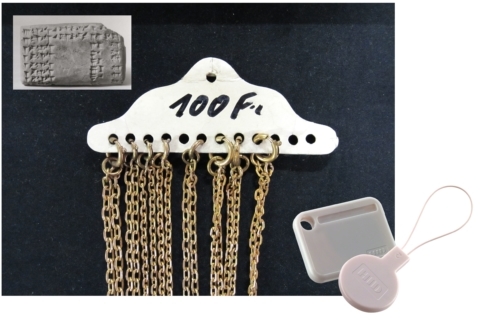
Jewellery, Matter, Time – True Cost of a Jewel
(2020-2021)
Researchers : Saskia Van der Gucht & Irma Földényi
In our current project we are building on the research of ‘Jewellery, Matter, Time – Materials in the Anthropocene’ by Irma Földényi and Liesbet Bussche, which investigated how precious materials are becoming extinct as a result of human activities on earth. There we have developed a visual essay on how artificial diamonds are becoming a new form of natural stone and concluded that growth time is speeded up, materials have no rights, jewellers are not part enough of public debates on material issues and the industry is not fully transparent on the true costs – among others.
Therefore in ‘Jewellery, Matter, Time – True Cost of a Jewel’ we will focus on the social contexts of man-made precious materials – contexts such as production, makers, traders, curators, collectors, wearers – to trace true cost, and the renewed meaning of material usage. We will follow one material from production contexts to the wearers context.
Furthermore, even though these are challenging times we are looking forward to find new ways of connecting with people, deepening our understanding and extending the contexts of jewellery by engaging with professionals from different fields within arts and design who are dealing with various questions relevant to the Anthropocene.
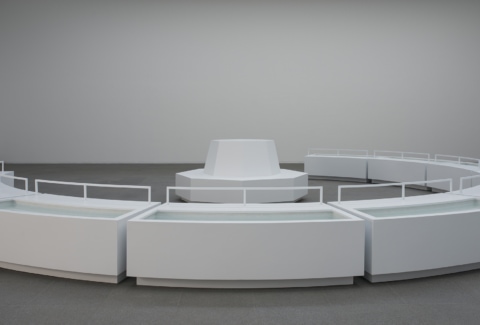
Unfolding
(2019-2021)
Researcher : dr. Wesley Meuris
This research wants to unfold the phenomenon of ‘exhibiting’, in and beyond the sphere of the arts. Within the area of natural history, anthropology, technology and even speculative sciences remarkable forms of presentation have been developed to convey insights on knowledge. A historical context will be set to reflect on theoretical and artistic positions in the field of display. Contemporary art projects will be viewed to examine common exhibition formats, as well more complex exhibition mechanisms. How does a work of art communicate with its own exhibition context? And in extend, how can this dialogue be incorporated in the work itself? Which parameters of exhibiting allow being absorbed through the work itself? How can a curatorial narrative be implemented in a work of art? What would be the effect of appropriating historical exhibition mechanisms within the work of art?

Strange currencies
(2019-2021)
Researcher : dr. Kim Gorus
The contemporary literary field is characterized by a revival of 19th century formats such as the Bildungsroman, the travel story or the (auto)biographical novel. This stands in strong contrast to the literary form-experiments from the 50ies and 60ies, that explicitly tried to achieve a rapprochement to the visual arts and wanted to sever itself from the novel as a bourgeois genre. There are, of course, exceptions to this rule, but in general we can assess a return to traditional narrative formats in the field of literature.
At the same time we can discern a growing attention for literary fiction within the domain of the visual arts as of the 80ies. The so-called ‘iconotextual’ book experiments from the 60ies have, thus, been continued in the visual arts, contrary to the field of literature, albeit in a very different form. Visual artists increasingly integrate publications as well as (literary) fiction in their work, whether as part of an exhibition, or not. In a certain sense it seems as if literary innovation has cut itself loose from the field of literature and has infiltrated in the domain of the visual arts.
This research project wants to study a limited corpus of artist’s publications and analyse how these publications challenge both literary as well as artistic categories and formats. The focus will be on instances of historiographic fiction and visual writing.

The Archives of the Tout-monde. In search of refuges for subversive aesthetic experiences
(2019-2021)
Researchers : dr. Joachim Ben Yakoub, Naïma Moldenhauer & Reem Shilleh
The action research ‘The Archives of the Tout-monde’ wants to engage with post-disciplinary visual praxis of artists and collectives in urban informal networks, outside the regular arts field.
Through the establishment of localized refuges that can facilitate subversive aesthetic experiences, it will analyze how regular institutions relate to this visual praxis.
Special attention for the relational, economic and ecological core of these land-shifting practices will contribute to the current research on the (under) commons.
Balancing between the sometimes counterproductive desire for visibility and the power of the invisible, aesthetics from the archives of decolonization and transnational solidarity are reactivated.
Boundaries are troubling, artists become curators and curators artists, as a result, the created spaces become works of art with their own sensibilities. From this shift, there is space for researching collective decolonial curatorial practices that, from the bottom up, blow life back into the apparently timeless still life of the visual arts.
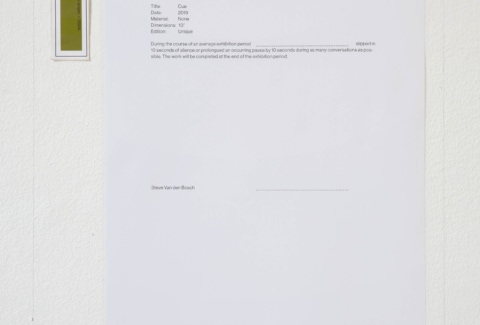
Cue: Instruction as Artwork
(2019-2021)
Researcher : dr. Steve Van den Bosch
Research in visual arts practice on the possibilities and implications of instruction as a work of art in dialogue with, but also beyond the history of conceptual and post-conceptual art, with particular attention to Eastern Europe.
The instruction will be viewed from other disciplines such as film studies, philosophy and psychology to arrive at a deeper insight and produce works that reflect the complexity of the instruction in contemporary art from the specificity of my artistic practice. In doing so, I will mainly focus on the tension between the instruction and its tangible or intangible result. The shifting roles of author, performer and audience are also of central importance, which also involves the investigation of intention, visibility, consciousness, interpretation and social context.
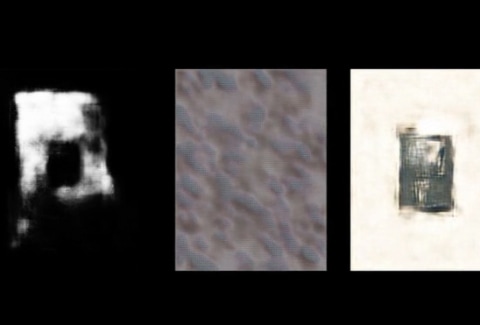
The Algorithmic Gaze: democratizing AI for artists and designers
(2019-2021)
Researchers : dr. Frederik De Bleser en Lieven Menschaert
The applications of artificial intelligence have permeated our society in recent years. Consider speech recognition, translation software, fraud detection, cancer cell detection, facial recognition and self-driving cars. Many of those applications teach the computer to look at the world.
In this research project we want to explore the creative applications of AI by gaining insight into the artificial thinking process of the computer. How can we, by “deciphering” the algorithms, get a view of “The Algorithmic Gaze” – the image that the computer has of the world, and how does this view influence our own view of reality? Is it a method that can create a new kind of innovative images or styles? Can a computer algorithm guide a creative process? And how do we democratize this research by simplifying the complex procedures so that they become accessible to a broad group of non-technical designers and artists?
https://algorithmicgaze.com/projects/the-algorithmic-gaze/

Images of hate
(2019-2021)
Researchers : dr. Tom De Smedt & Tom Van Iersel
In the course of this project, we intend to study the role of graphic design (image manipulation, design, typography, marketing) in polarization on online social media, and formulate appropriate responses to this kind of hateful propaganda in the form of counter narratives.
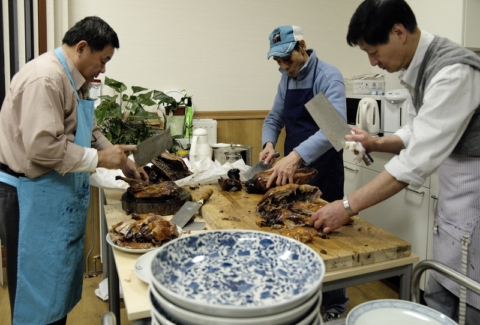
Designing Dialogues – artifacts as catalyst
(2019-2020)
Researcher : Laura Braspenning
This project focuses on facilitating a valuable dialogue in the contemporary urban reality of diversity and transnational mobility. By making intangible culture tangible through artifacts, people become aware of these ambiguous histories. This project explores how these artefacts can function to stimulate new insights, dialogue, mutual understanding and exchange between people, cultures and generations.
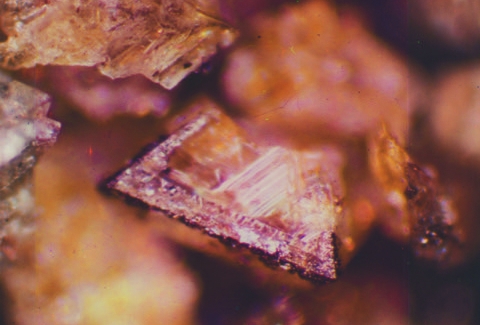
Jewellery, Matter, Time
(2019-2020)
Researchers : Liesbeth Bussche & Irma Földényi
This research project rethinks the position of the jewellery designer in the Anthropocene through artistic research into his/her material use and work context. Starting point is the area of tension between natural, traditionally valuable materials that cause irreparable damage to the earth during exploitation and artificially produced materials, which can serve as valid alternatives at first sight. The compilation of a material library, discussions with experts and field trips to industrial sites lead to critical findings on valuation and significance of matter and are made public in a scenographic presentation and article. The second part of the research project focuses on the artistic creation of a jewellery-related object in the context of the material. The unusual methodology for the jewellery designer of the inverted workshop that transforms a material-related context to a production context offers insights for the redefinition of the work context of the jewellery designer and the relevance of jewellery within the theme of the Anthropocene.
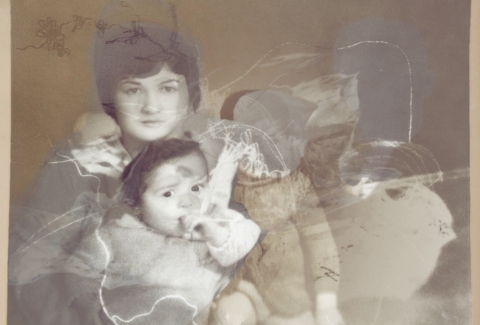
H.E.P. Hybrid editorial practices
Researcher : Hugo Puttaert
This research focuses on new collaborations, described as ‘hybrid editorial practices’ between artists and designers. Born from the ‘making public’ of visual practices, in which the monograph, the reference book and the catalogue are still the most common carriers, a hybrid editorial practice is fundamentally different. The work itself is the confluence of original and reproduction, and it involves intensive collaboration between artists and designers, in which their positions merge into one another. Whereas graphic designers were rather at the service of the imagination of an artistic practice, the concept of ‘artist’s book’ is interpreted differently in a hybrid practice. In a sense, this research contributes to a greater appreciation of the autonomous position that graphic designers acquire, no longer subordinate but equivalent.

The Performative as a Tool – Haunting Histories
(2018-2023)
Researcher : Paul Hendrikse
The Performative as a Tool – Haunting Histories is researching how the body and language are tools for artistic production. During the last two decades artists shifted their mode of production and became more research based. Documentary, research, journalism, literature, the body and language have become tools for artistic production. But how can I think the performative gesture further? What potentialities does it have and what is the full realm of its use? Can I direct my practice towards a mode that allows the works to become reservoirs of potential future action, as prompts for the audience or artist activity, and even as actors?
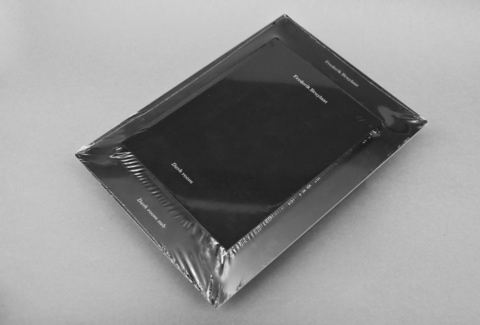
Sleeperhold Publications
Researcher : Ward Heirwegh
Sleeperhold Publications is a researching publication platform with a focus on editorial design. It departs from the practice of graphic design and presents itself both as client and designer. Its focus is interdisciplinary collaboration between creative landscapes. Sleeperhold will produce 10 outputs. After #10 this project will end. Every number is an experiment in approach / collaboration / distribution / media. There is no recurring theme, there is no recurring format, there is no recurring audience.

Workout
Researcher : Lauren Grusenmeyer
Workout is an investigation into the use of the ‘contrainte’ in visual arts and graphic design – or how the use of restrictions and time limits create freedom. Workout highlights artists and designers who define their free working terrain by imposing themselves a series of limitations.
By limiting themselves in time, material or way of working the makers become their own commissioners. This method casts itself as self-education, in which the repetitive character of the method allows to investigate a subject in depth. Thus, one finally finds ‘surprise in the routine’, as Henri Jacobs accurately worded and ‘one discovers freedom in the discipline’. This way the research endeavors to find answers to the fear of the white page or what else to do in a world of opulence. Within the framework of this research a series of artists are invited to reflect on their practice in relation to their methods and to test it with students.
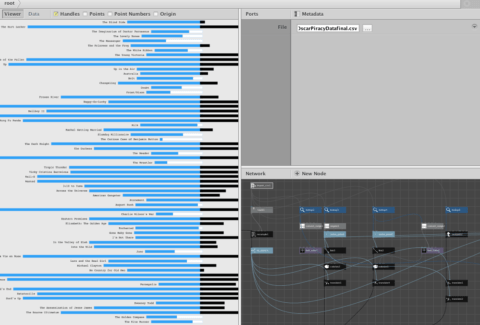
Nodebox
Researchers : dr. Frederik De Bleser, Stefan Gabriëls
EMRG is passionate about open-source software. Most of our tools are free or have licenses interesting to artistic, scientific, non-profit as well as commercial organizations.
NodeBox is a Mac OS X application that lets you create 2D visuals (static, animated or interactive) using Python programming code and export them as a PDF or a QuickTime movie. NodeBox is free and well-documented.
https://www.emrg.be/software/

Plot(less)
Researchers : dr. Steve Van den Bosch, Paul Hendrikse, dr. Kim Gorus, Joachim Ben Yakoub
Stories are everywhere. What is narrated, exists. Reality is fictionalized. Contemporary art theory and art practice centers on narrative strategies and structures. Narrative strategies seem to be pre-eminently suitable to question the borders between fiction/non-fiction, truth/perspectivism, identity/performativity. Narratives become a means to install the complexity and contradictions of things. Narration offers the possibility of migrating between positions. It is also a way to realize a ‘poetic hauntology’ echoing multiple voices of the past into the present. Narrative strategies also refer to ‘democratic reiteration’ by means of retranslating concepts, ideals and stories and democratizing and redefining fixed meanings.

A certain amount of words within a certain amount of time
Researchers : Marc Nagtzaam
Nagtzaam’s practice might be seen as belonging to the cult of the late modernist abstraction, with its emphasis on materiality, process and pure perception, unaffected by imagistic associations. However, language plays a decisive role in the deviation from this legacy, apparent both in the text works and in the titles given to the drawings which bring back to the factual, establishing the extent to which his works act as dense time-containers, despite their small, malleable, portable format. In the text works, the letters become forms and images themselves, more to be seen than to be read. Is the artist writing or depicting the image of a text? Even if we knew where these texts came from, we would have no idea where they are going. Are they excuses for miscellaneous representations, or a way to affirm form beyond semantic connotations?
Our PhD projects
A PhD in the arts involves in-depth artistic research that typically takes around four years to complete. PhD students at Sint Lucas Antwerpen develop innovative artistic and theoretical inquiries, contributing to both research and education through masterclasses, seminars, and publications.
Several artists and designers have successfully defended their doctoral projects, including Karen Vermeren, Steve Van den Bosch, Frederik De Bleser, Wesley Meuris, Tom De Smedt, Robin Vanbesien, and Annelys de Vet. Some remain affiliated with Sint Lucas Antwerpen through educational activities or post-doctoral research.
Current PhD projects
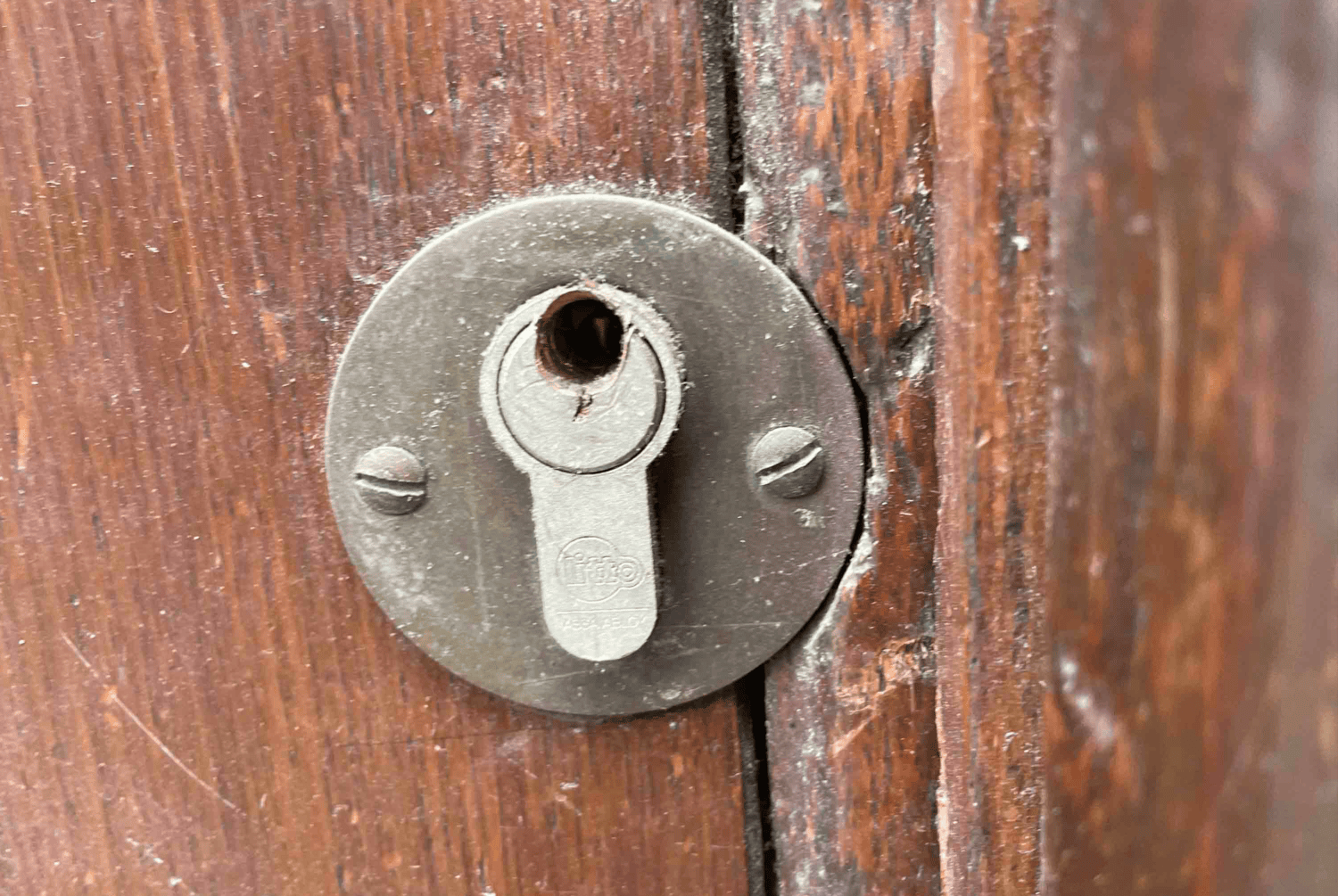
DIMITRI VAN DEN WITTENBOER
(2024-…)
Empowered Care
This research will explore power dynamics within care structures for precarious groups (the homeless, sans-papiers, asylum seekers). The artistic focus will be on theoretically and practically re-imagining ethics through love as an aesthetic within relationality. This will provide a unique potential to integrate emotions and spiritual philosophy in a political context. This work grounds itself in the theories and practices of socially and politically engaged community art aiming at challenging established infrastructures of the state by exploring constructive alternatives; love in its public and political dimension as a force for solidarity; and resistance against the alienation produced by capitalism. Ultimately, it is aimed at developing the method of “empowered care” by tackling the challenges of empowerment of precarious groups without compromising the sustainability of the care structure. The practice-led research will take place within the everyday life of long-term housing projects in occupied buildings aiming at collecting, cultivating and collectivizing empowering practices of care while reflecting on the pitfalls of power asymmetries between facilitators and caretakers. It will explore the political potential of autonomous housing communities to be spaces of resistance and grounds for true alternatives that can spread and multiply, and contribute to a nurturing exchange between the fields of anarchist culture and community artist within the context of care ethics.
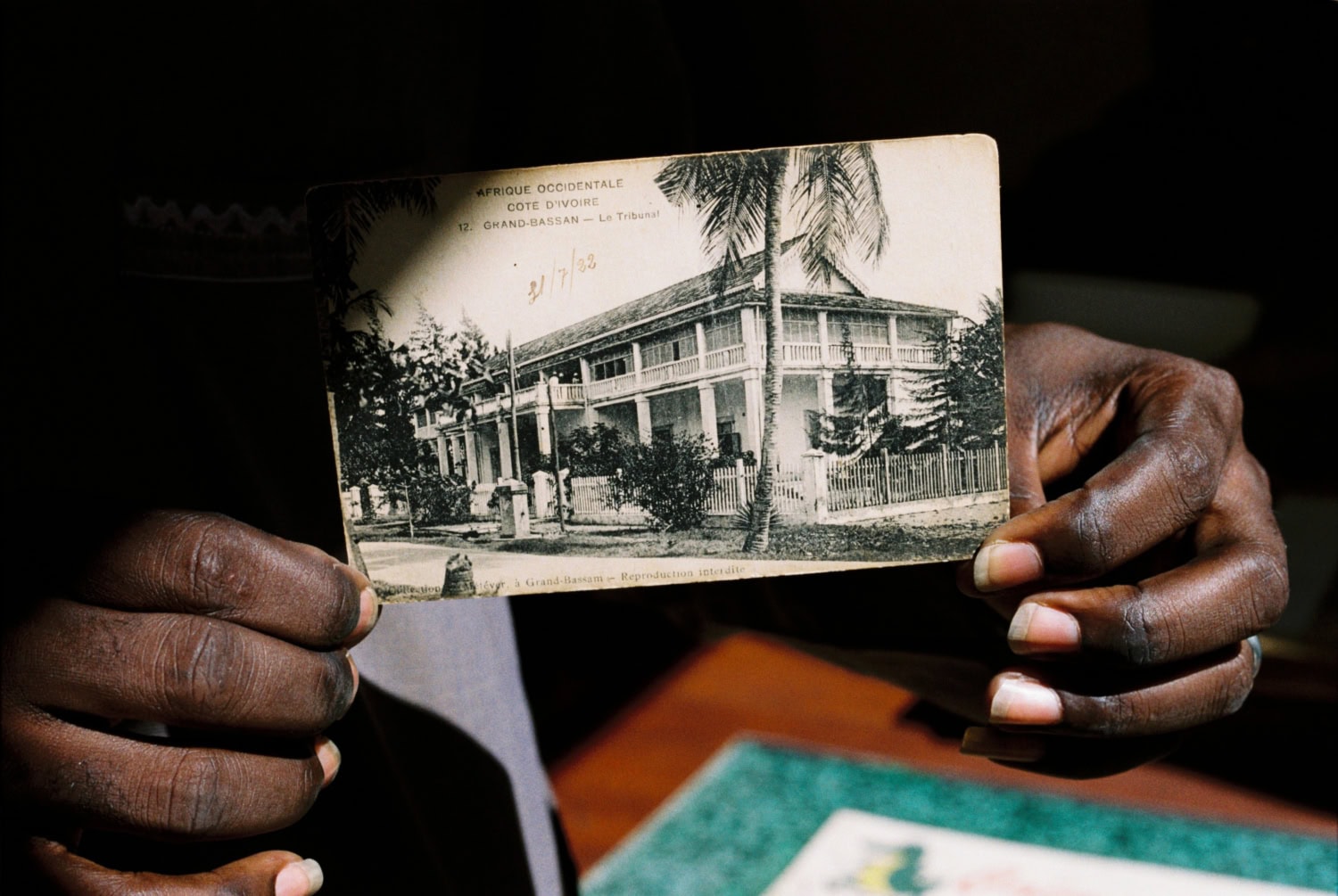
AYOH KRÉ DUCHÂTELET (2024-…)
Hearing room: Ghosts of the African Democratic Assembly
Hearing Room is an artistic research project on the forms of assembly of two intertwined histories: that of the trial of the militants of the Rassemblement Démocratique Africain held in Abidjan between 1948 and ‘51, and that of my grandfather, J-B. K. Kouassi, Ivorian coffee planter and RDA partisan. The project brings together these two stories as testimonies of the Franco-Ivorian colonial and postcolonial past, with the coffee and cocoa agro-industry as its nexus, through the (re)assembly of a series of documents, images and recordings drawn from institutional collections and family archives. Based on this, three forms of (re)assemblage are explored as the conceptual foundation of a methodology: the traditional Ivorian Kita, made of several narrow strips of fabric; conflict montage, referring to the process of putting together two conflicting parts; and the palaver in Ivorian transitional justice mechanisms. Transferring these concepts to my documentary and narrative installation practice, the research aims to provoke a reflection on the dimensions of a work of restitution (in the double sense of repairing and reassembling what has been dismantled) by asking the following question: How can these forms of (re)assemblage conceive (1) a method of investigation, (2) a means of restoring the framework of a polyphonic narrative, and (3) a way of reconfiguring heterogeneous pieces of an archive through an installation, the writing of a fictional novel, and public assemblies?
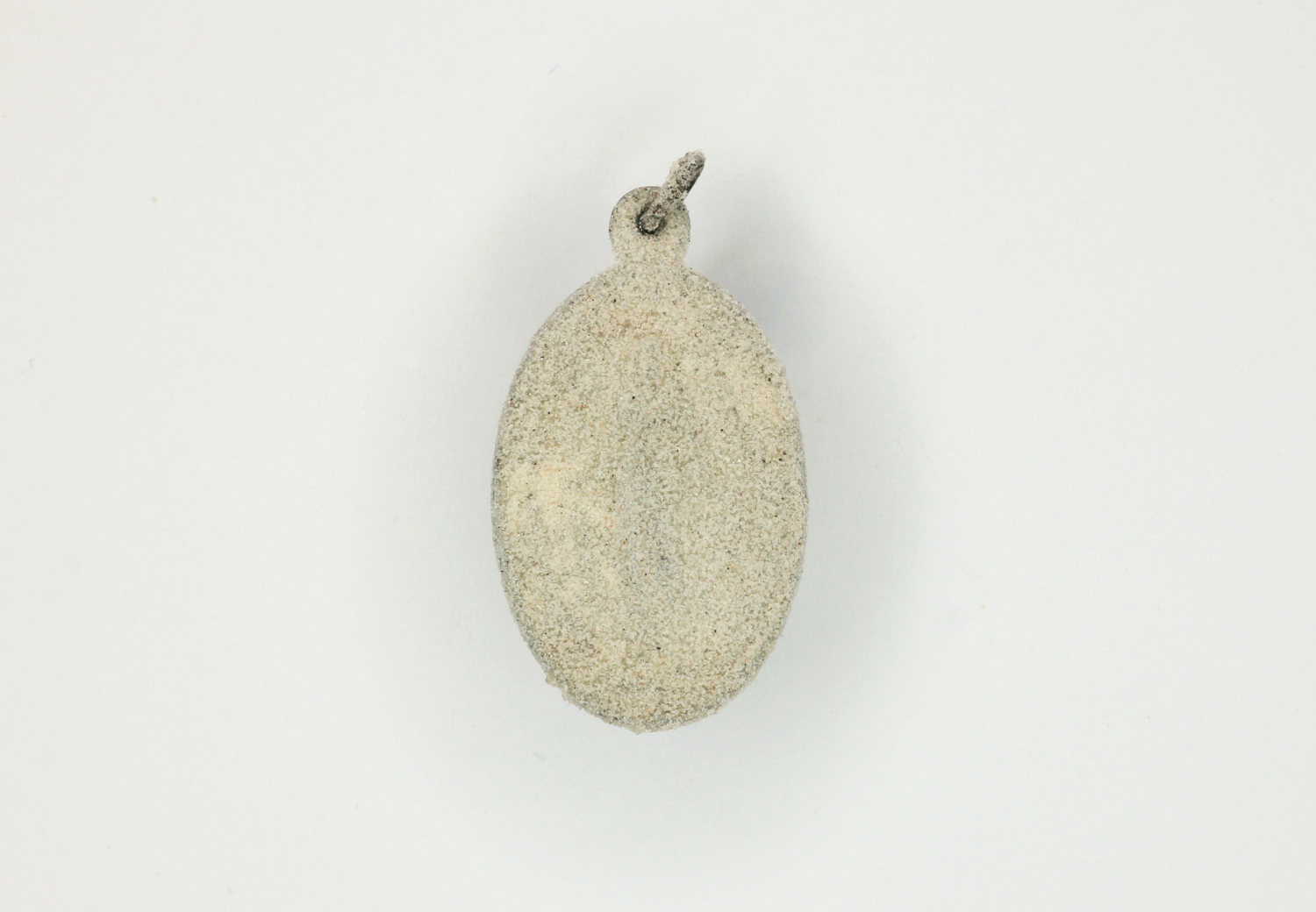
IRMA FÖLDÉNYI
(2024-…)
Voices of Materials: Probing the Cultural Ecology of Material Finitude
How can jewellery act as a performative medium that tells stories about material finitude on a planetary and local scale? This question came forth from my design practice, which concerns with the sourcing and valuing of materials, and my role as a jeweller within contemporary environmental discourses.
Just as the ‘Blue Marble’ image shed new view on Earth, can jewellery, with its small scale in this world, be able to create new, caring ways of relating to planetary processes or hyperobjects we are part of, yet which remain, in their complexity, hard to grasp.
The subject of this research is material finitude, the planetary limitation of materials. From an eco-critical approach, I propose an inquiry that goes beyond the human time scale to materiality.
With the methodology of probing I aim to learn what materials have witnessed and how they have transformed within their economic and environmental- cultural contexts. The voices that emerge are brought to public conversation in the tactile and visual language of jewellery.
Actively listening to three materials – sand, coal and water – forms the basis for three case studies, and a range of outcomes that contributes to wider discourse on the entanglement of humans, materials and ecosystems.
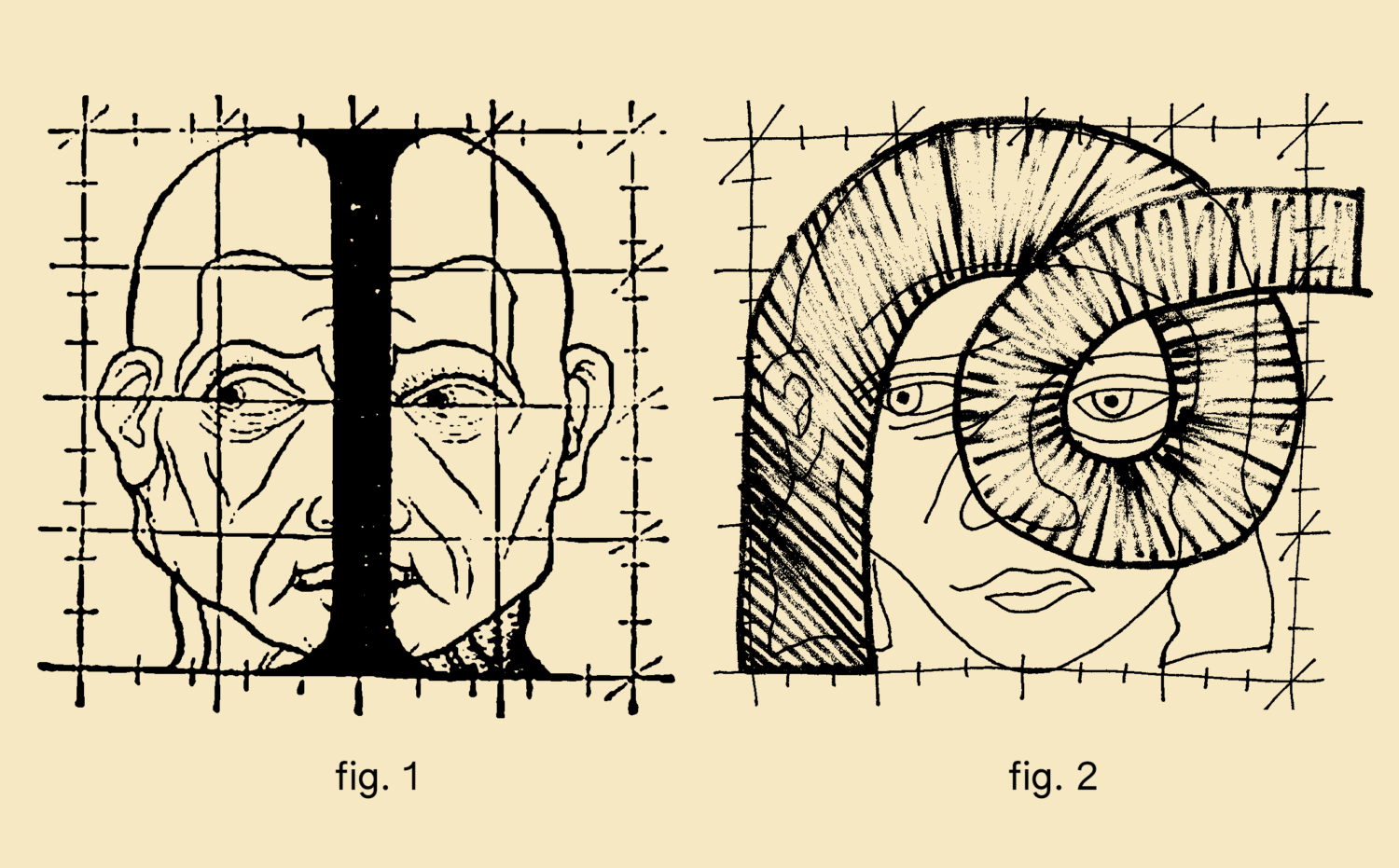
GARINE GOKCEYAN (2024-…)
Exploring the Diasporic Life of Armenian Script: a multiscript design laboratory
This multiscript research project addresses the inequities between scripts taking the Armenian writing system as a living proof and a laboratory script. Through an intersectional feminist and decolonial lens, the project seeks to create a series of multilingual and multiform resources that will change the under-resourced and disadvantaged status of Armenian script and will integrate it into the contemporary design realm. A much-needed space for dialogue and critical discourse around under-resourced languages could be created. (Fig.: Roman Capital Letter “I” according to the Human Body and Face, from Geoffroy Tory’s, Le Champ fleury, 1529. Paris. Source: © Bibliotheque national de France).
Supervisor Sint Lucas Antwerpen: Ann Laenen
Supervisor UA:
Pascal Gielen
Supervisor Sint Lucas Antwerpen: Joachim Ben Yacoub
Supervisor UA: Matthias De Groof
Supervisor Sint Lucas Antwerpen:
dr. Wesley Meuris
Supervisor UA:
prof. dr. Kyoko Iwaki
More info:
studio-if.nl
Supervisor Sint Lucas Antwerpen:
dr. Ruth Loos & PhD researcher Loraine Furter
Supervisor UA:
prof. dr. Kathleen Gyssels More info: www.garinegokceyan.com
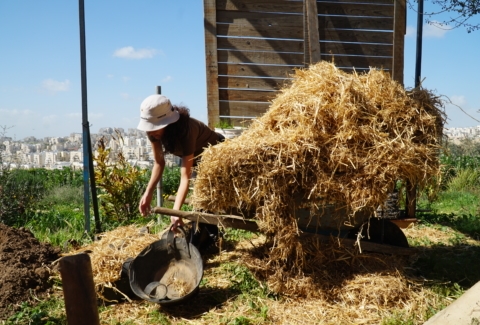
SHAYMA NADER
(2022-…)
Against Forgetting: Exploring poetic gestures of return(ing) to the land in Palestine
This research project intends to examine the erasures caused by settler-colonialism and the subsequent practices of resistance to that erasure, by exploring ways of relating to and cultivating the land through generative acts of resistance rooted in issues of seeds, soil, and popular pedagogies. The main objective is to interlace the reactivation of collective memories with multiple forms of storytelling and critical remembrance drawing from notions of the undercommons and fugitivity, collaborative grassroots filmmaking and critical fabulation, to inform poetics gestures and conversations envisioning land-centered and post-colonial imaginaries.
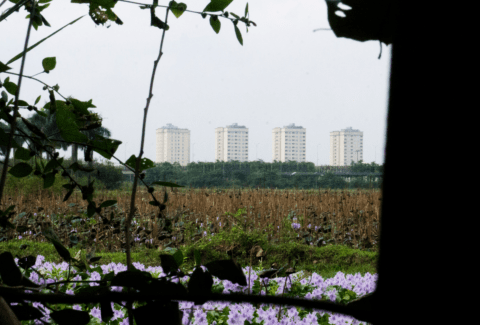
VIET VU (PHAM QUANG TRUNG) (2022-…)
Queering the censorship: A (self-)investigation through the first-person perspective of an experimental filmmaker in Vietnam
Seen from the first-person perspective as a queer experimental filmmaker, this project asks the question of how the community of Vietnamese radical audio-visual artists have been encountering and transcending different legislative and latent types of censorships imposed by the Vietnamese society, Vietnamese government, and the artists themselves.
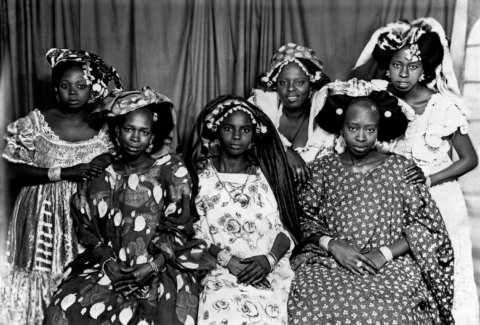
PIERRE-ANTOINE VETTORELLO
(2021-…)
Black Yarns
This research project aims to reveal a decolonial critique of fashion museology by sharing
genealogies of black women designers between 1939 and 1966. In it, Pierre-Antoine Vettorello reflects on the absence of black women designers in contemporary fashion history in France and Europe coming from my French/Ivorian designer-researcher background. He wants to restore missing narratives by re-editing archival garments and jewelry, potentially reattributing designs to their owners by publishing a research book of portraits and photographs including restored pieces. Creating archives, crafting garments issued from collective fashion memory will help fill the blanks using speculation and fiction based on black women who played a role in fashion between France and Senegal.
Image by Mama Casset, courtesy of Revue Noire.
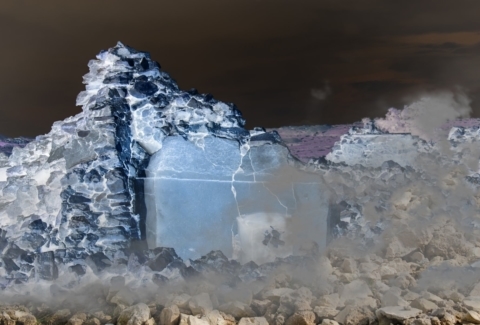
MONA HEDAYATI
(2021-…)
Reverb-Resonate: Sounding the Affective Frequencies of Migration
The project endeavors to create embodied conditions for communicating the ineffable psychophysiological complexity of lived experiences of migration to depart from reducing these experiences into verbal or visual narratives that cannot withhold their ineffability. The project’s aim is, thus, to capture, collect, and transform somatic markers—to stand in for psychophysiological changes—into sound as an affective medium to build sensory-performative experiences. As an interdisciplinary project embedded in the space of art-science-technology, the secondary aim is to denaturalize the legacy of scientific objectivity predicated on quantifying and datafying varied phenomena, including somatic markers. As such the project juxtaposes the logic of quantification and datafication against the materiality of the body by initially subscribing to and eventually departing from normative technological processes. The project, hence, reconfigures affective data into speculative acoustic spaces through the body that is already mediated by the technoscientific infrastructure.
Supervisor Sint Lucas Antwerpen:
dr. Joachim Ben Yakoub
Supervisor UA :
prof. dr. Gert Van Hecke & dr. Matthias De Groof
Supervisor Sint Lucas Antwerpen:
dr. Sofie Verdoodt
Supervisor UA: prof. dr. Philippe Meers More info: www.vietvuphm.wordpress.com
Supervisor Sint Lucas Antwerpen:
dr. Kim Gorus
Supervisor UA:
Prof. dr. Kathleen Gyssels
Prof. dr. Diana Arbaiza
More info:
pierreantoine.vettorello@kdg.be
Supervisor Sint Lucas Antwerpen:
dr. Frederik De Bleser
Supervisor UA:
Prof. dr. Roschanack Shaery-Yazdi
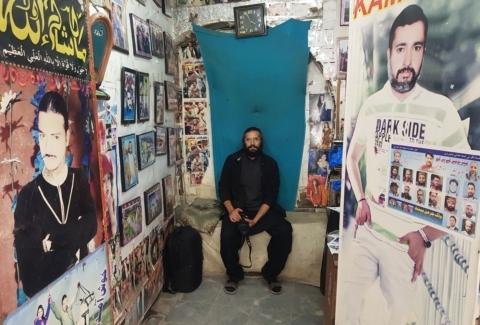
DANIAL SHAH (2021-…)
Visions of becoming and belonging: an (autobiographical) exploration of photo studios in Balochistan, Pakistan.
Focusing on the world of photo studios in contemporary Balochistan (Pakistan), the present project enters the terrain of the vanishing. With the arrival of digital technology photo studios are disappearing and along with them also their hand painted backdrops, props, costumes and cameras, the long sessions, the chatting and the manuality that make up the social life of these environments. What is not disappearing, however, is the desire to transform life by means of photographs where individuals are allowed to enter a fantasy world. Photographic studios in Balochistan are spaces where dreams are born and lives are shaped. In a studio you can become anything, a freedom fighter, a friend of the prime minister, the boyfriend of a movie star . Photographs are not mere representations, they are tools for performing life, for becoming. The disappearance of the studios also carries a deeper social meaning. Photographic aesthetics are in fact key terrain around which local communities gather. They bring individual fantasies in touch with a sense of belonging to the local community. So what will happen once they disappear? The project builds on my practice as a photographer and documentary filmmaker as well on my own biography as a displaced artist from Quetta, Balochistan, lending my own story and my own self to become the object of the work of local photographers. My exploration of the world of vanishing photographic studios will allow me to further explore the meaning of photographs in a South Asian context. Doing this I will also address matters of race, ethnicity and gender as they meet and merge in the context of the studios.

HODA SIAHTIRI (2020-…)
Singing the Silences
The songs of nomadic women of Bakhtiari, freely express the emotions and opinions of their female creators concerning different aspects of their daily lives. Through this research, I float in the fluidity of the songs of Bakhtiari inhabitants of Zagros mountains in west of Iran.
By mediating the processes of embodiment and transformation of the possibilities and the qualities of resistance in the repertoire of Bakhtiari songs against the ordeals of patriarchal social system, I propose to experiment with forms of embodied sonicity of resistance in performative audiovisual forms.
Engaging in this work, not only allows me to incorporate my own personal ancestral relations in Iran through the practice of singing, but also allows me to reconsider my situation as a displaced body in the heart of Europe, in Brussels. What bridges both is an embodied practice of survival in a society in which dominant voices mute and silence fragile narratives and ways of being, sensing and feeling. Together they push my research into poetic approaches of resilience to speak, narrate, voice and sing the silences I inherited.
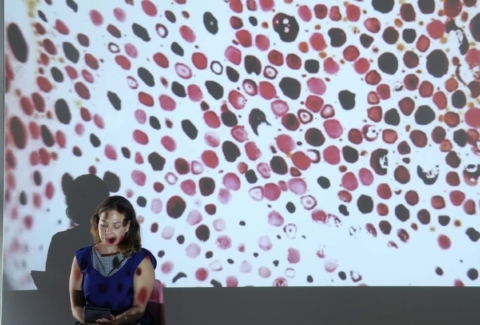
BIANCA BALDI
(2020-…)
Play-White: Racial Passing and Embodied Images
This research introduces a critical approach to “racial passing” and its complicity with image production. Someone who can pass for white is socially designated as one racial construct but performatively plays out whiteness. Passing complicates our current understanding of visual production and categories of identity.
Through my image-making practice, I reflect upon a visual history of racial passing in the South African context. By looking at the United States context I will establish synergies with the South African one to broach the absence of formal discourse. Through a reading of popular culture and literature, I clarify a contemporary position on the visual production of passing.
Play-White is a meditation on passing, embodiment, self-presentation, and the aesthetic thresholds of identity.
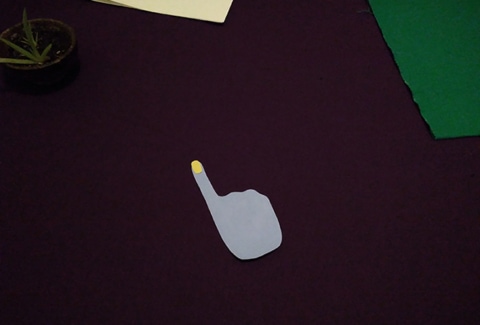
LORAINE FURTER (2019-…)
The research project The politics of publishing: researching encounters between artists’ books and intersectional feminist tools addresses artists’ books and the politics of publishing, creating forms to uncover forgotten histories in this field, through a critical design approach which includes feminist tools. The project will materialize in a series of hybrid publications (paper, digital, spatial, oral) that re·activate objects and histories and re·circulate them.
Supervisor Sint Lucas Antwerpen:
dr. Ruth Loos
Supervisor UA :
Prof. dr. Paolo Favero
More info:
www.danialshah.com
www.instagram.com/danialshah_
Supervisor Sint Lucas Antwerpen:
dr. Joachim Ben Yakoub
Supervisor UA :
Prof. dr. Paolo Favero
More info:
Hoda.siahtiri@kdg.be
Supervisor Sint Lucas Antwerpen:
dr. Petra Van Brabandt
Supervisor UA:
Prof. dr. Diana Arbaiza
More info:
Bianca.baldi@kdg.be
Supervisor Sint Lucas Antwerpen:
dr. Kim Gorus
Supervisor UA:
Prof. dr. Diana Arbaiza
More info:
loraine.furter@kdg.be
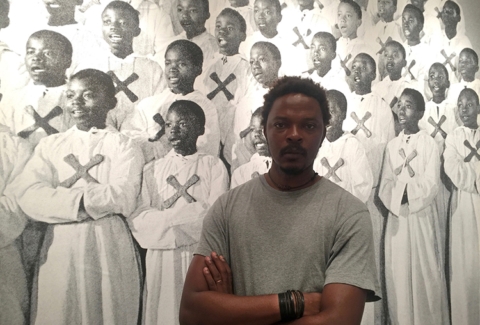
SAMMY BALOJI (2019-…)
Contemporary Kasala and Lukasa: towards a Reconfiguration of Identity and Geopolitics. This project aims to create new memory devices, based upon two existing devices used by different Luba groups living in the DRC:
– kasala is a ceremonial poem, sung or recited by Luba in the provinces Kasai Occidental and Kasai Oriental and Sankara, that serves as a public and solemn way to pay homage to and laud the actions and accomplishments of kings, chiefs, lineage heads and other types of public figures;
–lukasa is a memory board used and ‘read’ in a ritual performance by Mbudye, an association of men, responsible for the transmission of historical knowledge at the court of Luba kings, situated in the former province of Katanga.
These two different Luba groups were divided during the colonial era by boundaries between the former provinces of Kasai and Katanga. Descendants of Luba groups from Kasai who live in Katanga are now often considered ‘foreigners’ by those who claim to be the ‘original’ inhabitants of Katanga. The art works to be created are meant to bring these groups back together through a narrative that is part personal, part historical, par fictitious.
Supervisor Sint Lucas Antwerpen :
dr. Bambi Ceuppens & dr. Ruth Loos
Supervisor UA:
Prof. dr. Paolo Favero
More info:
sammy.kabambibaloji@kdg.be
Defended Phd projects
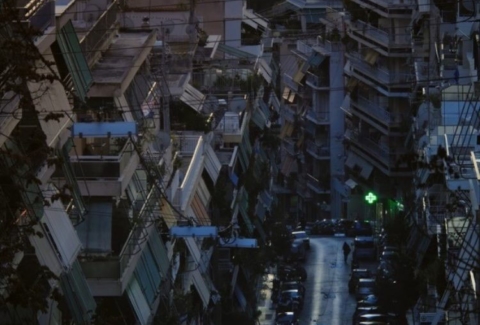
ROBIN VANBESIEN (2018-…)
Toward a Poetics of Close-To-Each-Other The PhD research project Ciné Place-Making explores how to work out the relationship between a moving image practice and the collective imaginaries of “place-making” by various grassroots practices, networks, and movements. Through a series of film works, multiple figures of “co-elaboration” (tools, methods, principles, and approaches) are developed and created for a screen-based (re-)assembly of various forms of place-making, with the purpose of preserving and elaborating these as unbound resources for more-than-social struggles.
Supervisor Sint Lucas Antwerpen:
dr. Wesley Meuris
Supervisor UA:
Prof. dr. Pascal Gielen
More info:
robin.vanbesien@kdg.be
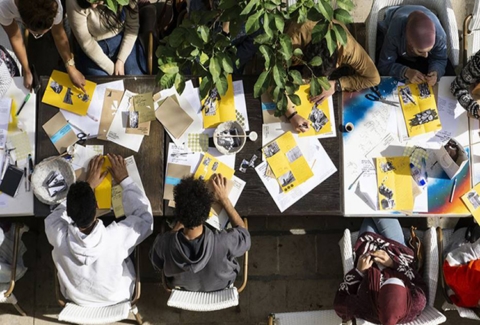
ANNELYS DEVET (2019-…)
The PhD research project “Disarming Design from Palestine” questions how design can be a vehicle for empowerment and solidarity in conflicted realities. How can one through the practice of design develop sustainable positions in fractured societies? Building upon relations of trust and long-term involvements in Palestine, Annelys de Vet will analyse, define and design the conditions for design to have a social, political and eman-cipatory impact. A concrete goal is to develop, in close collaboration with local partners, new forms and platforms for design education, collaboration and exchange in Palestine, reinforcing the economic, political and artistic sustainability of designers.
Supervisor Sint Lucas Antwerpen:
dr. Petra Van Brabandt
Supervisor UA :
Prof. dr. Pascal Gielen
More info:
annelys.devet@kdg.be
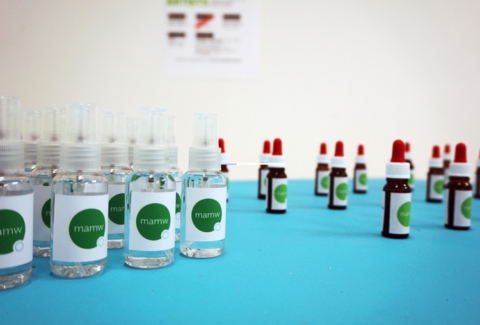
dr. SARAH HENDRICKX (2016-2022)
The (bureau)creative Climate focuses on the Research Centre on Creative Abilities meandmywork, a center of knowledge on bureaucreativity. In order to survive within our future working environment creativity was put forward as only weapon, making the aim – to increase the personal level of creativity – profoundly popular for misuse by a capitalist system. mamw became a metaphor for a world where creativity is a pill one can simply take to become successful. The research learns from existing bureaucreative structures and visualizes its methodologies within the fictional Research Centre.
Supervisor Sint Lucas Antwerpen:
dr.Wesley Meuris
Supervisor UA:
Prof. dr. Pascal Gielen
More info:
sarah.hendrickx@kdg.be
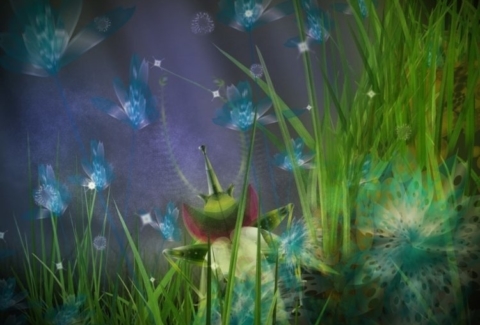
dr. LUDIVINE LECHAT (2015-2020)
Interactive fairy tales examine the relationship between new media art and healthcare, for combating stress and loneliness among hospitalised children.
Supervisor Sint Lucas Antwerpen:
dr. Tom de Smedt
Supervisor UA:
Prof. dr. Koen Norga
Supervisor UA/VUB:
Prof. dr. Monica Dhar
More info:
ludivine.lechat@gmail.com
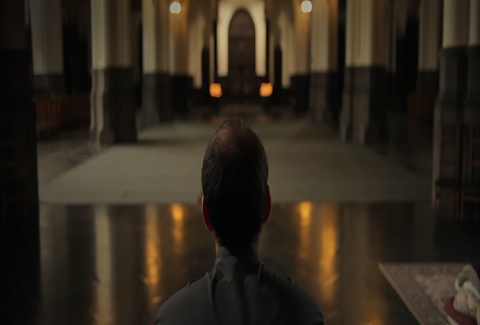
dr. ALI BAHARLOU (2015-2020)
Parallel narratives, different elements and forms of representations and their effect on audience perception
researches parallel narratives in film and how choice can lead to different destinies for the protagonist. The questions raised are how audience perceive these topics in parallel narratives and how filmmakers can change or manipulate the perception of choices, multiple paths and free will by diverse narrative elements, devices and different forms of representations.
Supervisor Sint Lucas Antwerpen:
dr. Tom de Smedt
Supervisor UA:
Prof. dr. Philippe Meers
More info:
alibaharlou@gmail.com
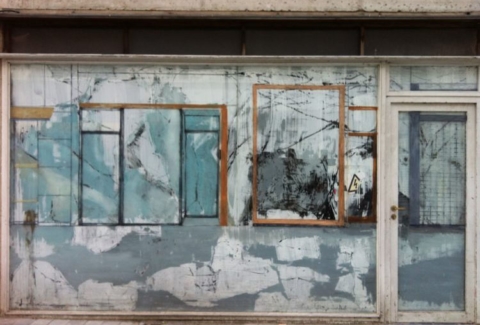
dr. KAREN VERMEREN (2012-2018)
Fault Lines (Breuklijnen): the search for new artistic representations of the geological landscape calls into question traditional views of landscape paintings. This project searches for new representations of the geological landscape in two-dimensional in situ installations. It focuses in particular on the movement of fault lines and glaciers. The research was conducted in collaboration with various researchers at the University of Antwerp (Prof. Ivan Nijs, PhD, Plant and Vegetation Ecology Research Group and Prof. Emeritus Louis Beyens, PhD, Ecosystem Management Research Group) and Sint Lucas Antwerpen (Horizontal Drawing, led by Arpaïs Du Bois).
Supervisor Sint Lucas Antwerpen:
dr. Sofie Verdoodt
Supervisor UA:
Prof. dr. Ivan Nijs
More info:
Karen.Vermeren@kdg.be
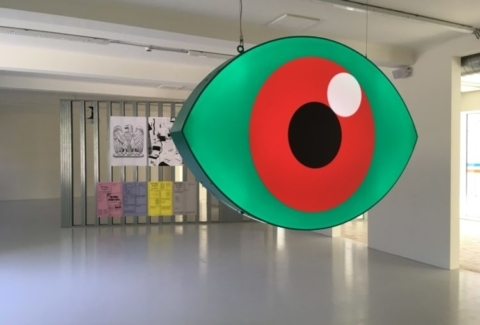
dr. BOY VEREECKEN (2012-2019)
Signature Strengths revolves around risk mitigation and the desire for certainty, and how this can be related to design strategies & methodologies. The research will be demonstrated through the writing of a novel, consisting of feature writing formats. In this way, it wants to question what it means to be ‘complete’ within the production of a particular product and what the relevance is of the features accompanying that very result.
Supervisor Sint Lucas Antwerpen:
Michel Van Beirendonck
Supervisor UA:
Prof. dr. Luc Pauwels
More info:
mail@boyvereecken.info
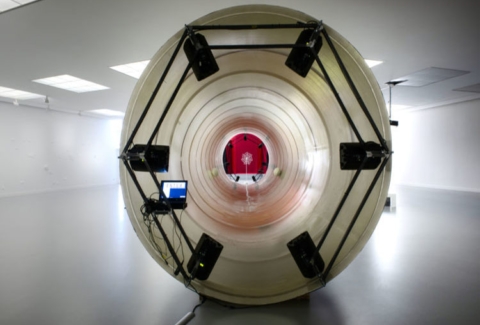
dr. HASEEB AHMED (2014-2018)
The Wind Egg reaches back over 3000 years to ancient Egyptian, Greek, Indian, Chinese, and Arabic cultures. Held as fact until the 17th century it postulates that animals and people can reproduce with the wind as plants do. Vultures in particular were thought to be exclusively female and reproduce solely with the Western wind. Taking them as the starting point and using modern wind tunnel Ahmed researched the possibility of human reproduction with the wind and without men, freeing both from nature with technology. In collaboration with Zurich University of the Arts and Von Karman Institute for Fluid Dynamics.
Supervisor Sint Lucas Antwerpen:
Werner Van dermeersch
Supervisor UA:
Prof. dr. Staf Van Tendeloo
More info:
hwahmed@gmail.com
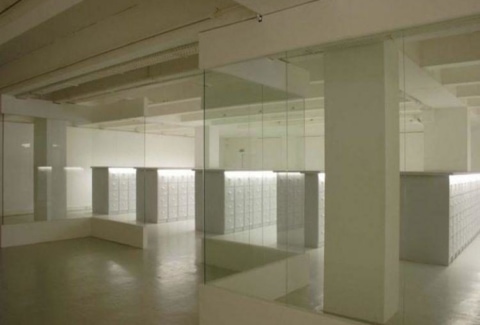
dr. WESLEY MEURIS (2010-2017)
Exhibiting Knowledge researches the correlation between knowledge (knowing) and art. How should an artistic work deal with this? Can science become a medium? How is knowledge/art conserved? How is art consumed, how does the artistic image deal with this? How does architecture (space) regard itself as a conductor in value judgments of knowledge? Does science allow itself to be deconstructed by an artistic image?
Supervisor Sint Lucas Antwerpen:
Werner Van Dermeersch
Supervisor UA:
Prof. dr. Herwig Leirs
More info :
wesley.meuris@kdg.be
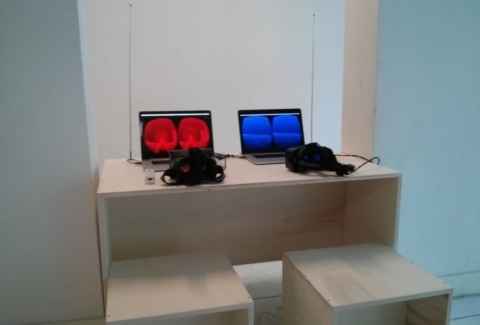
dr. FREDERIK DE BLESER (2011-2016)
This research project studies the impact of generative software on graphic design and art and how such an approach differs from traditional digital tools such as Adobe Photoshop. Based on the research, we can understand the scope of generative design tools and help determine the future for the digital tools used by designers every day.
Supervisor Sint Lucas Antwerpen:
Lucas Nijs
Supervisor UA:
Prof. dr. Serge Demeyer
More info:
frederik.debleser@kdg.be
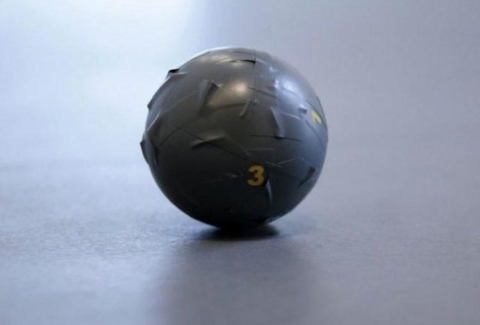
dr. STEVE VAN DEN BOSCH (2010-2016)
Artwork as a productive vanishing point examines how the conflict between the textual and the zero point of the artwork can function productively. This question has been examined from the perspective of art history and philosophy in order to develop new parameters within contemporary artistic practice.
Supervisor Sint Lucas Antwerpen:
Mark Luyten
Supervisor UA:
Prof. dr. Arthur Cools
More info:
Steve.vandenbosh@kdg.be
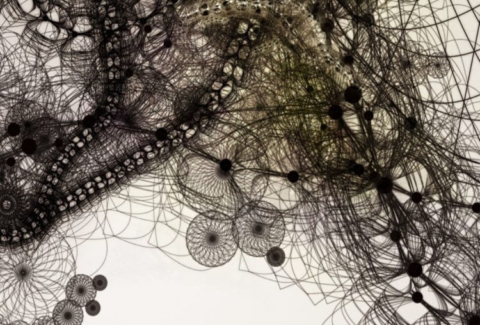
dr. TOM DE SMEDT (2008-2012)
Modeling Creativity: Case Studies in Python focuses on computer models of creativity, with the help of artificial intelligence techniques. Based on the doctoral thesis, we can conclude that conscious self-reflection still distinguishes people from machines in the area of creativity. This research project has also led to the development of two open-source programmes for the Python programming language: NOGL, a development platform for simple computer games and Pattern, a user-friendly programming package for natural language processing. The research was funded by the UA Industrial Research Fund (IOF).
Supervisor Sint Lucas Antwerpen:
Lucas Nijs
Supervisor UA:
Prof. dr. Walter Daelemans
More info:
tom.desmedt@kdg.be
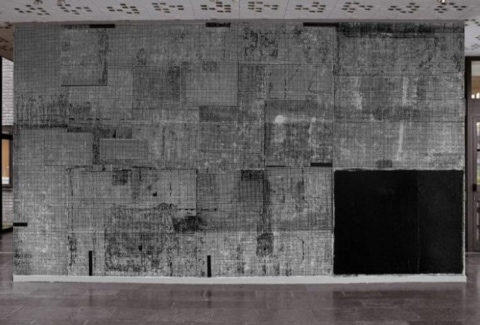
dr. DIRK VAN DER EECKEN (2005-2008)
The art of the invisible: drawings and the significance of nanostructures was completed with the support of a UA University Research Fund (BOF) research project for art research. The aim of this PhD thesis is to demonstrate that art and science are complementary and that the fascinating world of atoms can enthral both the scientist and the artist.
Supervisor Sint Lucas Antwerpen:
Werner Van dermeersch
Supervisor UA:
Prof. dr. Staf Van Tendeloo
More info:
ruth.loos@kdg.be
Would you like to do a PhD at Sint Lucas Antwerpen?
Sint Lucas Antwerpen finances every two year PhD projects in the Arts. Those who meet the requirements below may compete to the open call. The next call will be launched in December 2025.
> Application form PhD Fellowship (word)
> Application form PhD Fellowship (pdf)

Requirements
Firstly, you must have a mature artistic or design practice and a strong research proposal. A master’s degree in visual arts or in another relevant field is a requirement. In addition, your doctoral proposal must be supported by a promoter (PhD) at Sint Lucas Antwerpen and a promoter (ZAP) at the University of Antwerp.
Open Call for PhD projects (50%)
An external jury makes a first ranking of the submitted proposals and positively ranked candidates will be invited for interview. The jury will communicate it’s final ranking to the ARIA Research Board. Following a positive recommendation by the ARIA Research Board, the ARIA Steering Group gives the final approval for the granting of the doctoral fellowship. The PhD student can then enrol for the doctoral programme at the University of Antwerp. An individual PhD committee is set up at the start to assist the doctoral student in their trajectory.
Doctoral programme
The Antwerp Doctoral School helps PhD students to successfully complete their doctoral studies. For this, the Antwerp Doctoral School organises a compulsory doctoral programme that can be individually tailored. The doctoral student can choose from an extensive range of courses as well as include research-related activities in the programme. Doctoral students can also claim a programme credit for attending courses and conferences. All research and programme activities are reported annually to the Antwerp Doctoral School in the form of a progress report.
Antwerp Research Institute for the Arts (ARIA)
Within the University of Antwerp, the Antwerp Research Institute for the Arts (ARIA) is the point of contact with the Schools of Art and helps give shape to the artistic research. ARIA is specifically authorised to grant doctoral degrees in Art. In addition, ARIA maintains the relationship between the University, Schools of Arts and the artistic world. In collaboration with the three Schools of Art in Antwerp, ARIA also organises a joint range of research seminars where researchers, PhD students and other interested parties are welcome.
Contact & info:
Ruth Loos, Policy Officer Research and Social Outreach
View the programme and other research activities on the ARIA website.
Advanced Master: Master of Research in Art & Design
Our advanced master program focuses on research development of artists and designers whose practice is anchored in a social-political context (including but not limited to feminism, social design, migration, decolonialism, class politics, queer politics, disability politics, capitalism, identity, Anthropocene, the (under)commons, community art, conflict&design, healing&rituals, history, big data…). The program offers time and space to do research without the requirement of any particular final format such as an exhibition or production.
The focus is on artistic research and research exchange. The program is aligned to each participant’s work rhythm and caters for specific theoretical interests by inviting a diversity of voices from a variety of fields that can cater to the individual and collective research interests. Collective learning and participatory coaching are central to the program; it comes with the engagement of each participant to care for each other’s wellbeing and research development. We offer a coaching and participation methodology that is anchored in intersectional situatedness and care.
More info: Advanced Master: Master of Research in Art & Design
GROUNDS Research Publication
GROUNDS, developed out of a growing need and desire to make the multifaceted research culture of Sint Lucas Antwerpen accessible to a wide audience, both within the school community and beyond.
GROUNDS offers a forum for the field of artistic research, which is averse to categories and continuously reinvents and reinvents itself.

Editorial board:
Joachim Ben Yakoub, Kim Gorus, Ward Heirwegh, Ruth Loos, Wesley Meuris, Petra Van Brabandt & Tom Viaene
Chief editor:
Kim Gorus
Graphic Design:
Ward Heirwegh
Publisher:
KdG University of Applied Sciences and Arts / Sint Lucas Antwerpen, School of Arts KdG
Contact:
kim.gorus@kdg.be